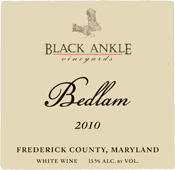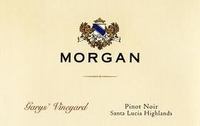There is a quote attributed to Henry James claiming that the appreciation of literature involves two different kinds of emotion: Surprise and recognition. One might say that these diverse reactions also apply to wine appreciation. Some people only feel comfortable drinking familiar wines–the tried and true Cabernets, Chardonnays, Sauvignon Blancs and Pinot Noirs that are like old, trusted friends. Other enophiles seek out unfamiliar grape varieties and obscure  producers. These wine lovers go out of their way to sample wines from Macedonia or Massachusetts, Albania or Albuquerque, and some will insist, as a friend of mine does, that the best food to accompany high-end Champagne is popcorn.
producers. These wine lovers go out of their way to sample wines from Macedonia or Massachusetts, Albania or Albuquerque, and some will insist, as a friend of mine does, that the best food to accompany high-end Champagne is popcorn.
Most of us, of course, fall somewhere in between the extremes. We may appreciate the occasional vinous surprise, but for the most part we rely on wine types and styles we recognize, and most of us are convinced that the best wine to drink with steak is something red and hearty. In other words, we go for recognition. But I’ve been thinking about the element of surprise recently following a flurry of unexpected encounters with bottles of wine from my home cellar that challenged some common expectations about wine.
Drink Only Current Vintages of White Wine? We’ve all heard that most white wines are best enjoyed as soon as the winery releases them to the market. This is when their fruit flavors are bright and their acid levels crisp and fresh. Notorious exceptions include some of the great white wines of Burgundy and Alsace, whose best wines develop added character and complexity with age, but for the most part white wines are best appreciated in their youth. Recently I was rooting through the wines stored in my basement in search of a red wine when I came across a bottle of 2006 Robert Stemmler Carneros Chardonnay that had mistakenly ended up next to that producer’s Pinot Noir. It had been lying there quiet and undetected for a couple of years–at least one year too long?–so I decided to chill it and serve it right away.
I was pretty sure the wine would still be decent; Robert Stemmler, after all, is a fine producer of California wines, and 2006 was a splendid vintage, but I was amazed by the absolute deliciousness of this very mature white wine. Its slightly musky perfume swirled tauntingly up from the glass, and the complex aromas and flavors evoking fresh ripe figs, honeyed apricots and a blessing of incense, were superb. I am not suggesting that every 2006 Chardonnay will deliver this same kind of pleasure, but in this instance excellent winemaking plus an excellent vintage led to a very pleasant surprise. (current vintage of Robert Stemmler Carneros Chardonnay is 2009, $34).
Drink Only Familiar Wines? Sampling little-known wines in a winery tasting room or wine bar is one thing, but spending money for a bottle of wine from your own neck of the woods can be a riskier proposition, unless your neck of the woods happens to be somewhere on the west  coast. I’ve been resisting opening the bottle of Black Ankle “Bedlam” that I picked up on a whim not too long ago. Made in Maryland, my home state, I didn’t know what to expect. I’ve been hearing good things about this fairly new estate, but still–Maryland??
coast. I’ve been resisting opening the bottle of Black Ankle “Bedlam” that I picked up on a whim not too long ago. Made in Maryland, my home state, I didn’t know what to expect. I’ve been hearing good things about this fairly new estate, but still–Maryland??
I finally opened Bedlam a couple of days ago and was utterly surprised by its voluptuous fruity/floral fragrance and flavors, and velvety, full bodied texture. Bedlam is a beguiling blend of Grüner Veltliner, Albariño, Viognier, Chardonnay and Muscat. You’ll probably have trouble finding it if you don’t live in the mid-Atlantic (where it sells for $28 at the winery and in a few retail stores), but why not give one of your own local wineries a try? You too might be pleasantly surprised.
Red Wine with Meat, White with Fish? This old maxim has been regularly debunked of late, but most of us continue to adhere to certain long held beliefs such as the aforementioned red wine with steak. For similar reasons we wouldn’t even think of serving white wine to accompany penne with sausage and tomato-based sauce. I served just such a dish for dinner recently, and on a crazy impulse I set a bottle of Muscat that I’d brought home from Alsace a couple of years ago on the table alongside the red wine I’d selected. Although it was certainly an unexpected food and wine pairing, everyone liked the oddball way the Muscat connected on the palate with the pasta, though a couple of guests found it somewhat distractingly fragrant and a tad too rich for the dish, and they preferred the red wine.
However, the rest of us were completely charmed by the way the silky Muscat connected with the pasta’s spicy flavors and soft texture, and how its sweetness wrapped around the spice in the sauce. What made the combination work was that the sauce–a “faux ragu” made quickly  with sausage and tomato, finished with cream and cheese–was itself as rich and sensuous as the wine. I cannot deny that the alternate red wine was equally delicious with the pasta, but what surprised us all was the way that two wines from opposite ends of the taste spectrum could both be so satisfying, each in its own way, with a single dish. (The white wine was Dirler Grand Cru “Saering” 2004; the red Morgan 2007 Pinot Noir, Gary’s Vineyard, Santa Lucia Highlands, $48.)
with sausage and tomato, finished with cream and cheese–was itself as rich and sensuous as the wine. I cannot deny that the alternate red wine was equally delicious with the pasta, but what surprised us all was the way that two wines from opposite ends of the taste spectrum could both be so satisfying, each in its own way, with a single dish. (The white wine was Dirler Grand Cru “Saering” 2004; the red Morgan 2007 Pinot Noir, Gary’s Vineyard, Santa Lucia Highlands, $48.)
So, if you’re about to start your spring cleaning, consider cleaning out some of your assumptions about wine while you’re at it….
7
